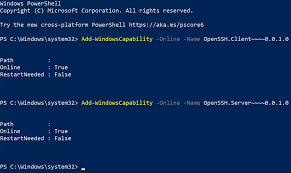In PowerShell, variables are used to store and manipulate data. You can assign values to variables, perform operations on them using operators, and combine them in expressions. Here’s a basic overview of working with variables, operators, and expressions in PowerShell:
Variables:
To create a variable, you use the $ symbol followed by the variable name. Variable names are not case-sensitive and can contain letters, numbers, and underscores. Here’s an example of assigning a value to a variable:
$myVariable = "Hello, World!"
You can also assign the output of a command to a variable:
$processes = Get-Process
Operators:
PowerShell supports a variety of operators for performing operations on variables and values. Here are some commonly used operators:
- Assignment operator (
=): Assigns a value to a variable. - Arithmetic operators (
+,-,*,/,%): Perform mathematical calculations. - Comparison operators (
-eq,-ne,-lt,-gt,-le,-ge): Compare values and return Boolean results. - Logical operators (
-and,-or,-not): Combine Boolean values. - String concatenation operator (
+): Concatenates two strings.
Expressions:
Expressions are combinations of variables, values, and operators that produce a result. You can use expressions in assignments, calculations, and comparisons. Here are a few examples:
$sum = 10 + 5 # Assigns the result of addition to $sum variable
$fullName = $firstName + " " + $lastName # Concatenates strings
$isGreaterThan = $value1 -gt $value2 # Compares two values and assigns a Boolean result
You can also use parentheses to control the order of operations in an expression:
powershellCopy
$result = (5 + 2) * 3 # Parentheses are used to perform addition before multiplication
In PowerShell, you can work with variables, operators, and expressions to store and manipulate data. Here’s a basic overview of how to use them:
Variables:
- To create a variable in PowerShell, you can use the
$prefix followed by the variable name. For example:$name = "John" - Variables can store different types of data such as strings, numbers, or Boolean values.
- You can assign a value to a variable using the assignment operator
=.
Operators:
- PowerShell supports various operators for performing operations on variables and values. Some commonly used operators include:
- Arithmetic operators:
+(addition),-(subtraction),*(multiplication),/(division),%(modulus). - Comparison operators:
-eq(equals),-ne(not equals),-gt(greater than),-lt(less than),-ge(greater than or equal to),-le(less than or equal to). - Logical operators:
-and(logical AND),-or(logical OR),-not(logical NOT).
- Arithmetic operators:
Expressions:
- An expression is a combination of variables, operators, and values that produce a result when evaluated.
- You can use expressions to perform calculations or comparisons, and assign the result to a variable.
Here are a few examples to help illustrate the usage:
- Assigning a value to a variable:
$name = "John" - Using arithmetic operators:
$x = 5$y = 10$sum = $x + $y$product = $x * $y - Using comparison operators:
$num1 = 5$num2 = 10$isGreater = $num1 -gt $num2$isEqual = $num1 -eq $num2 - Combining operators and variables in an expression:
$a = 10$b = 5$result = ($a + $b) * 2 - 5
PowerShell also provides a variety of built-in functions and cmdlets that can be used within expressions to perform more complex operations.
Remember to follow the appropriate syntax and rules when working with variables, operators, and expressions in PowerShell. You can refer to the PowerShell documentation for more details on specific operators, expressions, and their usage.
